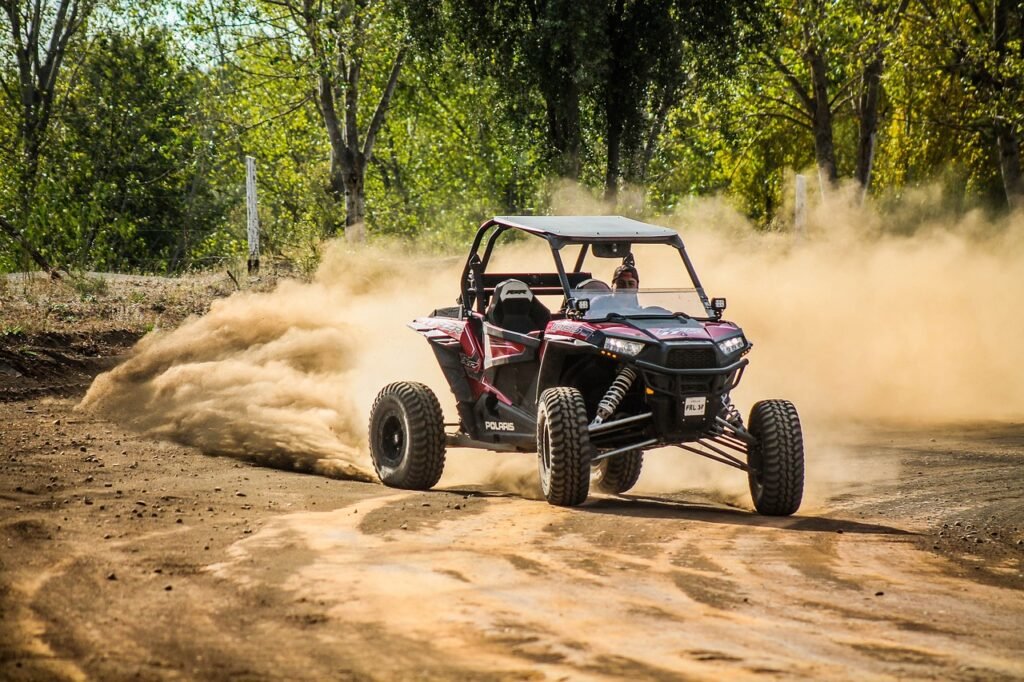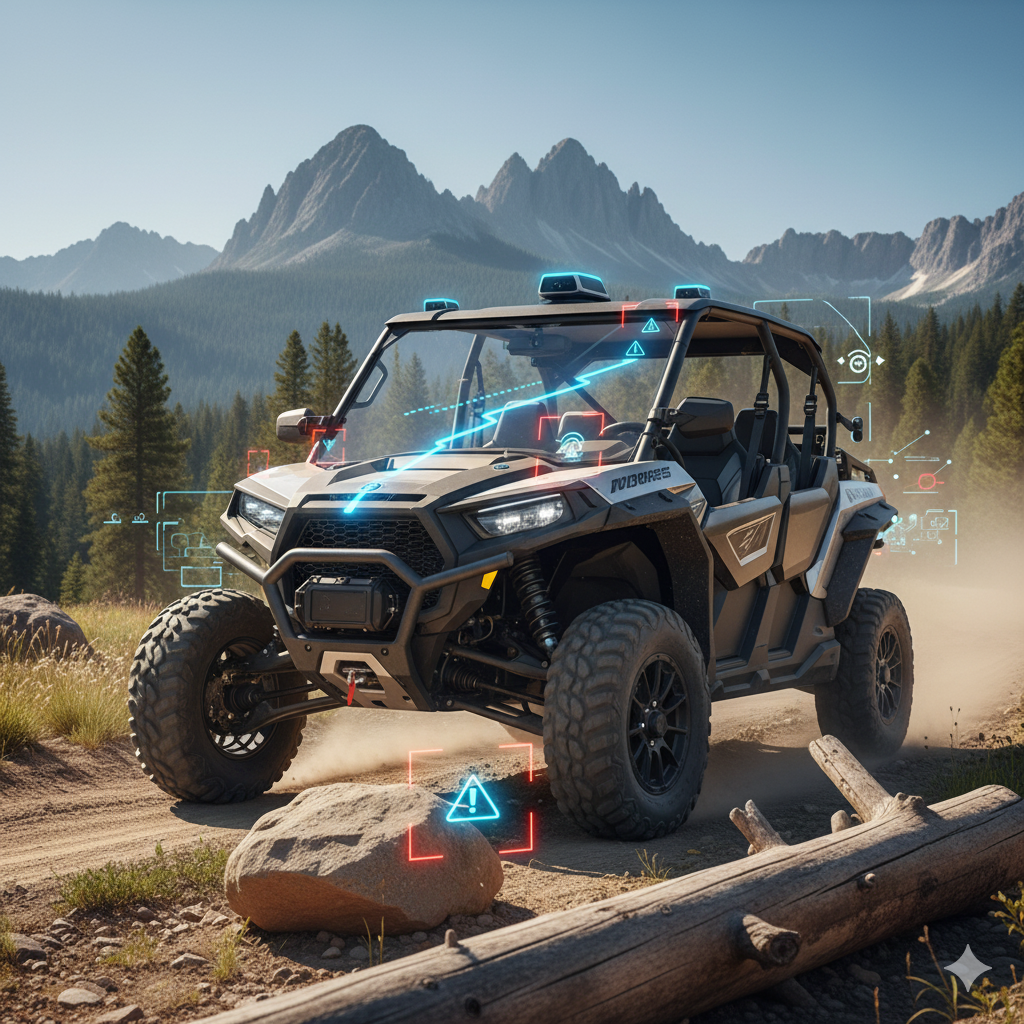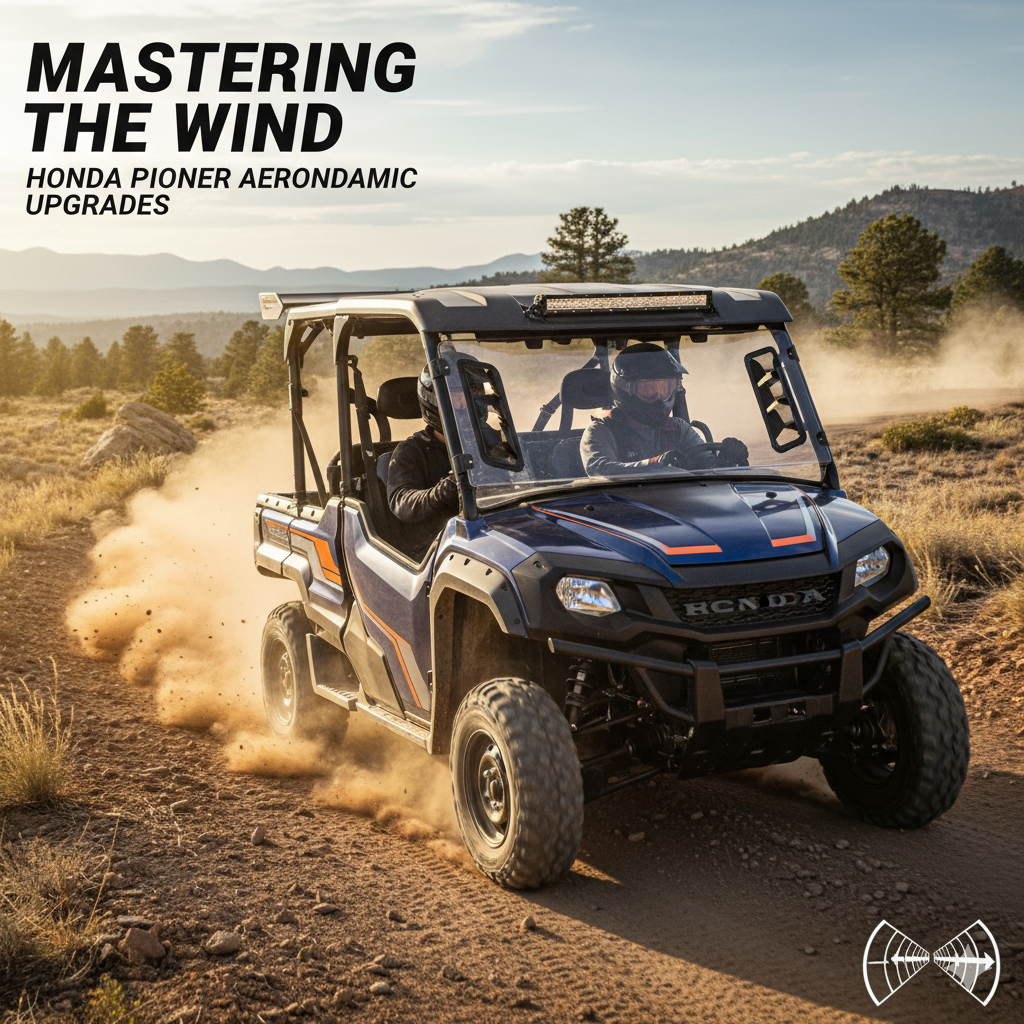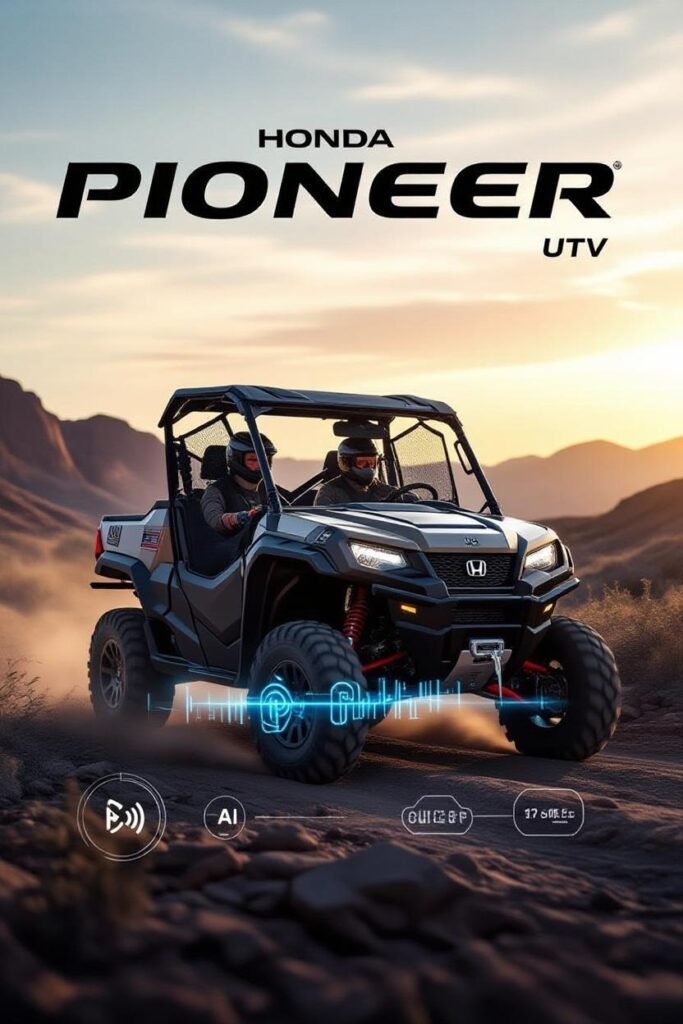The Honda Pioneer vs Polaris Ranger are two prominent names in the realm of Utility Task Vehicles (UTVs).
As leading models in their category, these vehicles have garnered a significant following among enthusiasts and professionals alike.
UTVs, known for their versatile applications, are essential tools for a variety of tasks, ranging from rigorous work assignments to recreational off-road adventures.
Choosing the right UTV can significantly impact efficiency, safety, and overall satisfaction.
This comparison aims to provide a comprehensive overview of the Honda Pioneer and Polaris Ranger, examining their key features, performance metrics, and suitability for different user needs.
Whether you require a reliable companion for agricultural work, a robust vehicle for trail riding, or a dependable machine for transporting goods, understanding the strengths and weaknesses of each model is crucial.
By delving into aspects such as engine performance, design, durability, and user experience.
This analysis seeks to aid prospective buyers in making an informed decision tailored to their specific requirements.
Both the Honda Pioneer and Polaris Ranger have established themselves as top contenders in the UTV market, each offering unique attributes that cater to a diverse range of preferences.
As we explore their distinctive characteristics and capabilities.
It becomes evident that the choice between these two models hinges not only on technical specifications but also on personal priorities and intended use cases.
Thus, this blog post serves as a valuable resource for anyone looking to invest in a UTV that aligns perfectly with their needs and expectations.
Performance and Power
When evaluating the performance and power of the Honda Pioneer and Polaris Ranger, several key aspects warrant consideration, including
- engine specifications,
- horsepower,
- torque,
and overall power delivery.
The Honda Pioneer is equip with a robust engine lineup.
Ranging from a 675cc single-cylinder engine in the Pioneer 700 series to a 999cc twin-cylinder engine in the Pioneer 1000 series.
These engines are design to provide a balanced blend of power and efficiency.
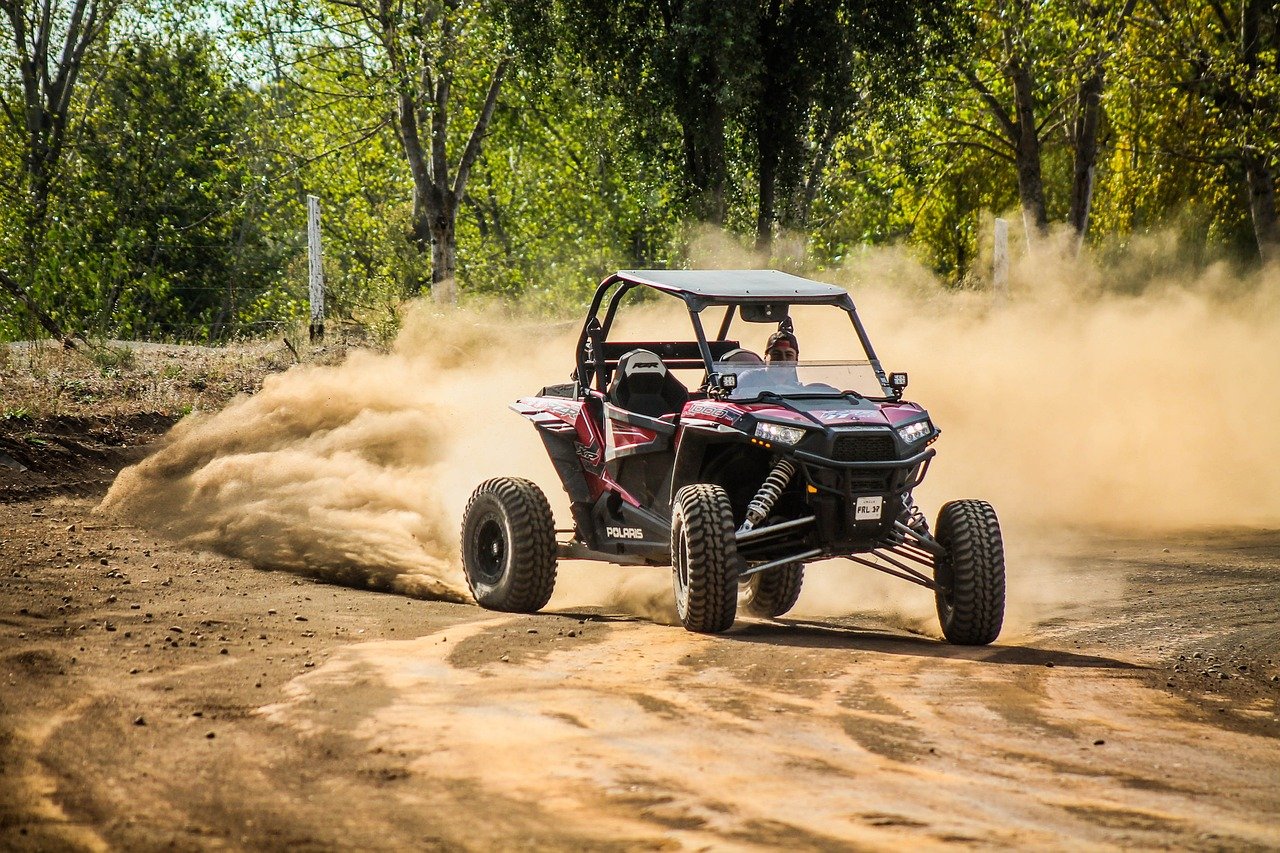
Delivering horsepower that ranges from around 36 HP in the 700 series to approximately 72 HP in the 1000 series.
This range enables the Pioneer to handle a variety of tasks.
From leisurely rides to demanding work applications.
In contrast, the Polaris Ranger offers a versatile array of engine options as well, notably the ProStar series engines.
The Ranger 570, for instance, features a 567cc single-cylinder engine producing 44 HP.
While the Ranger XP 1000 boasts a 999cc twin-cylinder engine generating an impressive 82 HP.
These engines are engineered for high torque output and responsive power delivery.
Ensuring that the Ranger can tackle challenging terrains and steep inclines with ease.
The higher horsepower in the Ranger XP 1000 positions it as a formidable contender in scenarios requiring substantial pulling power and acceleration.
The Honda Pioneer and Polaris Ranger both excel in rough terrain and muddy environments.
Thanks to their advanced suspension systems and high ground clearance.
The Honda Pioneer is known for its independent rear suspension and automotive-style transmission.
Which provides smooth and reliable power transfer.
Unique features such as the Intelligent 4WD system allow the Pioneer to adjust traction in real-time.
enhancing its capability on uneven surfaces.
Similarly, the Polaris Ranger is equipped with a robust suspension system and features like the True On-Demand All-Wheel Drive (AWD).
Which automatically engages all four wheels when more traction is needed.
This ensures optimal performance on various surfaces, from rocky trails to wet, muddy paths.
Additionally, the Polaris Ranger’s high payload and towing capacities further underscore its capability in demanding conditions.
In summary, both the Honda Pioneer and Polaris Ranger offer impressive performance and power.
Each with unique features that cater to different needs.
The choice between the two ultimately depends on specific requirements.
Whether it’s the balanced power of the Honda Pioneer or the high-torque prowess of the Polaris Ranger.
Comfort and Convenience
When it comes to comfort and convenience.
Both the Honda Pioneer and Polaris Ranger offer a range of features designed to enhance the user experience.
Starting with seating arrangements, the Honda Pioneer boasts spacious.
Well-cushioned seats that can comfortably accommodate up to five passengers in its larger models.
Its innovative QuickFlip seating system allows for easy transformation between cargo space and additional seating, providing flexibility for various needs.
In contrast, the Polaris Ranger also prioritizes comfort with its plush seating and ample cabin space.
The Ranger’s adjustable driver and passenger seats ensure a customized fit.
While the spacious interiors allow for a comfortable ride, even during extended periods.
Both UTVs have ergonomic designs that minimize driver fatigue, with strategically placed controls and ample legroom.
The quality of ride is another critical factor where both the Honda Pioneer and Polaris Ranger perform well.
The Honda Pioneer integrates advanced suspension systems that absorb shocks and provide a smooth ride over rough terrains.
Additionally, its noise and vibration reduction technologies contribute to a quieter, more serene driving experience.
Similarly, the Polaris Ranger excels in ride quality with its superior suspension system.
Which effectively dampens vibrations and reduces noise.
The Ranger’s cab is designed to minimize external sounds, allowing for a more peaceful journey.
Both UTVs offer impressive vibration reduction technologies that enhance comfort during off-road adventures.
Additional comfort features further distinguish these UTVs.
The Honda Pioneer offers optional heating and air conditioning systems.
Ensuring optimal cabin temperature regardless of weather conditions.
Its adjustable seats and tilt steering wheel enhance driver comfort and control.
On the other hand, the Polaris Ranger comes equipped with similar heating and cooling options.
Along with features such as ample storage compartments and cup holders, which add to overall convenience.
In conclusion, both the Honda Pioneer and Polaris Ranger excel in comfort and convenience.
Offering a range of features that cater to the needs of their users.
Their emphasis on ergonomic design, quality of ride, and additional comfort features make them strong contenders in the UTV market.
Durability and Build Quality
The durability and build quality of the Honda Pioneer and Polaris Ranger are critical factors for potential buyers.
As these attributes directly impact the longevity and reliability of these utility vehicles.
The Honda Pioneer is renowned for its robust construction, utilizing high-quality materials and a well-engineered frame.
The vehicle’s body is crafted from heavy-duty steel and reinforced plastics.
Which contribute to its resilience under harsh conditions.
The frame design is optimized for strength, ensuring minimal wear and tear even after extensive use.
Additionally, Honda’s attention to detail in craftsmanship is evident in the seamless integration of components.
leading to fewer instances of mechanical failures.
On the other hand, the Polaris Ranger also boasts impressive build quality with a focus on durability.
The Ranger’s construction features a combination of steel and composite materials that strike a balance between strength and weight reduction.
The frame is designed to withstand rigorous off-road activities.
And the vehicle is equipped with robust suspension systems to absorb shocks and reduce stress on the chassis.
Polaris has implemented advanced manufacturing techniques to enhance the structural integrity of the Ranger.
Making it a reliable choice for demanding tasks.
When comparing the longevity and reliability of the Honda Pioneer and Polaris Ranger.
Both models exhibit commendable performance.
The Honda Pioneer is backed by a comprehensive warranty.
Which reflects the manufacturer’s confidence in the vehicle’s durability.
Common issues reported by users are minimal and typically pertain to minor wear parts rather than major structural failures.
Likewise, the Polaris Ranger offers substantial warranty coverage, ensuring peace of mind for owners.
User feedback indicates that the Ranger maintains its integrity over time.
With reported issues being relatively rare and often easily addressed through regular maintenance.
Overall, both the Honda Pioneer and Polaris Ranger demonstrate superior build quality and durability.
The choice between the two may ultimately come down to specific user preferences and the intended usage of the vehicle.
Each model brings its own set of strengths to the table, making them both worthy contenders in the utility vehicle market.
Off-Road Capability
The off-road capability of a utility terrain vehicle (UTV) is a critical consideration for enthusiasts and professionals alike.
When comparing the Honda Pioneer and Polaris Ranger, several factors come into play.
Such as suspension systems, ground clearance, and tire options.
These elements significantly influence how each vehicle handles the diverse challenges encountered in off-road environments.
The Honda Pioneer is equipped with a sophisticated suspension system that includes double-wishbone front and rear suspensions.
This setup ensures a smooth ride over rough terrain, effectively absorbing shocks and bumps.
The Pioneer also boasts a noteworthy ground clearance of 12.7 inches.
Which is essential for navigating rocky trails and avoiding obstacles.
Tire options for the Honda Pioneer are designed to provide excellent traction.
With all-terrain tires that excel in various conditions, from loose gravel to compacted dirt.
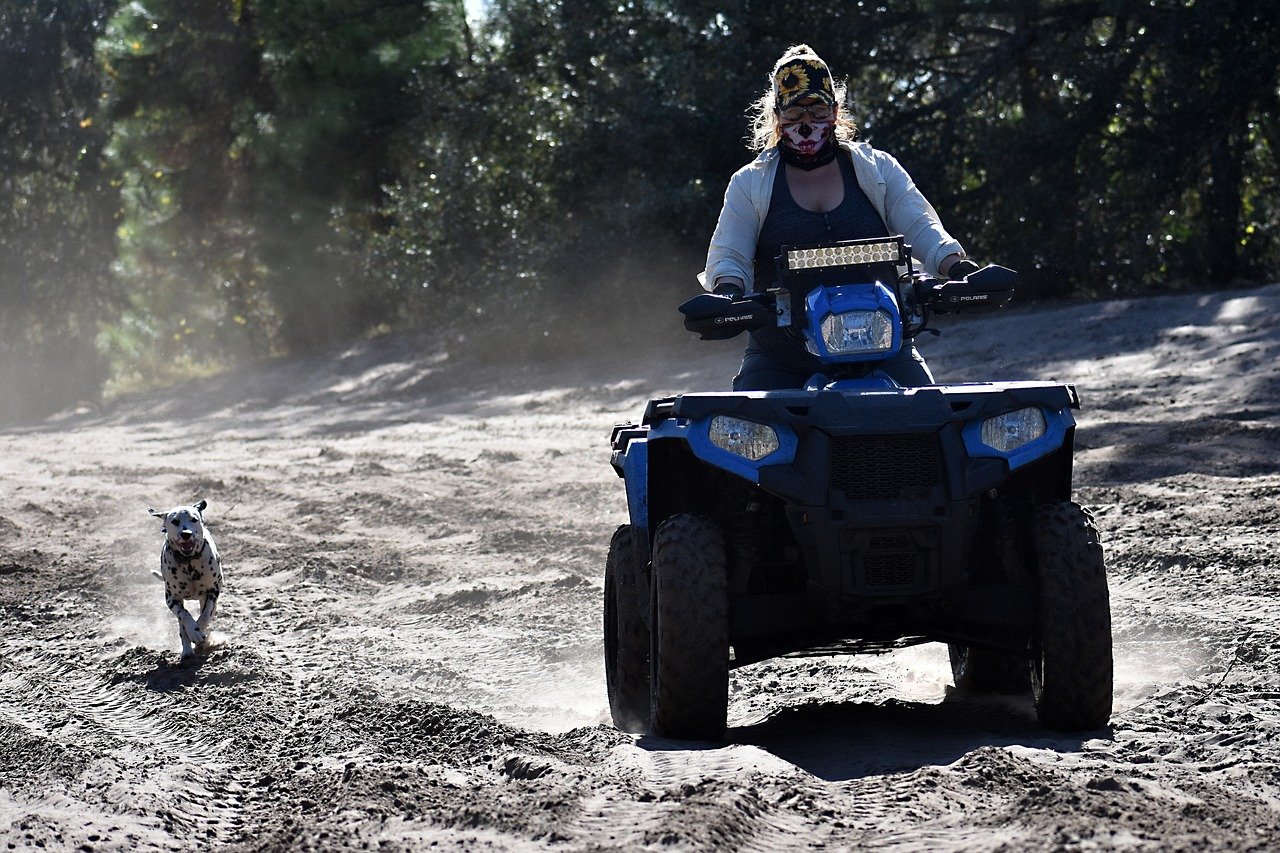
In comparison, the Polaris Ranger also features an advanced suspension system, with dual A-arm front and independent rear suspensions.
This design offers exceptional handling and comfort, even on the most rugged trails.
The Ranger’s ground clearance stands at an impressive 13 inches, slightly surpassing the Pioneer, which can be advantageous in deeper ruts and more challenging terrains.
Polaris offers a range of tire options, including specialized mud tires that enhance performance in deep mud and water crossings.
Both the Honda Pioneer and Polaris Ranger are equipped with unique off-road technologies that enhance their capabilities.
The Honda Pioneer includes the Intelligent 4WD system, which automatically adjusts power distribution to maintain optimal traction.
On the other hand, the Polaris Ranger features an On-Demand True AWD system that engages all four wheels when extra traction is needed
Then reverts to two-wheel drive to conserve fuel and reduce wear.
In terms of handling various off-road challenges, both UTVs perform admirably.
The Honda Pioneer excels in rocky terrains and steep inclines, thanks to its robust suspension and high ground clearance.
Meanwhile, the Polaris Ranger demonstrates superior performance in muddy conditions and water crossings due to its specialized tire options and advanced AWD system.
Ultimately, the choice between the Honda Pioneer and Polaris Ranger will depend on the specific off-road conditions and individual preferences of the user.
Utility and Versatility
When considering the utility and versatility of the Honda Pioneer and Polaris Ranger, several factors come into play, including cargo capacity, towing capabilities, and available storage options.
Both vehicles excel in providing robust utility for a variety of tasks, making them popular choices in the utility vehicle market.
The Honda Pioneer offers a cargo bed with a capacity of up to 1,000 pounds, depending on the model.
This allows for substantial hauling capabilities, which is essential for tasks such as farming, hunting, or transporting equipment.
Additionally, the Pioneer can tow up to 2,500 pounds, making it a reliable partner for heavy-duty tasks.
Its versatility is further enhanced by the QuickFlip® seating system.
Which allows for easy transformation from a two-seater to a four-seater.
Accommodating both passengers and cargo with ease.
On the other hand, the Polaris Ranger boasts a cargo bed that can handle up to 1,500 pounds, offering a slight advantage in hauling capacity over the Honda Pioneer.
The Ranger also excels in towing, with capabilities reaching up to 2,500 pounds.
Its versatility is evident in the Lock & Ride® cargo system.
Which allows users to quickly and securely attach a variety of accessories to the vehicle, enhancing its functionality for different tasks.
Whether it’s a gun scabbard for hunting or a cargo box for farming.
The Polaris Ranger provides ample customization options.
Both vehicles offer a range of accessories and modifications to further enhance their utility and versatility.
The Honda Pioneer can be outfitted with additional storage boxes, winches, and plows, making it adaptable to a wide range of activities.
Similarly, the Polaris Ranger comes with an extensive list of available accessories, including bed extenders, tool racks, and snow plows, ensuring it can meet the demands of various applications.
In conclusion, both the Honda Pioneer and Polaris Ranger demonstrate exceptional utility and versatility, making them suitable for a range of tasks.
Their cargo capacities, towing capabilities, and customizable storage options ensure they can be adapted to meet the needs of farmers, hunters, and recreational users alike.
Safety Features
When evaluating the Honda Pioneer and Polaris Ranger, safety features are a critical aspect to consider, especially given the diverse terrains and conditions these utility task vehicles (UTVs) encounter.
Both manufacturers prioritize occupant safety, integrating a range of protective measures to enhance the overall security of drivers and passengers.
The Honda Pioneer is equipped with robust roll cages that provide structural integrity and protection in the event of a rollover.
Seat belts are standard across all models, ensuring that occupants remain securely fastened during operation.
Additionally, the Pioneer includes side nets that act as barriers, preventing limbs from extending outside the vehicle, particularly in rough terrains.
The Polaris Ranger similarly incorporates a strong roll cage design, offering substantial protection against rollovers.
Like the Pioneer, it features seat belts for all seating positions, ensuring occupants are safely restrain.
The Ranger also enhances safety with its Lock & Ride Pro-Fit cab system, which allows for the installation of additional safety accessories, such as doors and windshields, providing an extra layer of protection from external elements.
Advanced safety technologies also differentiate these UTVs.
The Honda Pioneer includes electronic stability control (ESC).
Which helps maintain vehicle stability by reducing the risk of skidding or loss of control.
This system is particularly beneficial when navigating slippery or uneven surfaces.
On the other hand, the Polaris Ranger is equip with an anti-lock braking system (ABS).
Which prevents wheel lock-up during sudden braking.
Thereby enhancing control and reducing stopping distances on varied terrains.
Furthermore, the Polaris Ranger offers an advanced traction control system.
Ensuring optimal grip and handling, particularly in challenging conditions such as mud or snow.
This feature is instrumental in maintaining vehicle stability and preventing slippage.
While the Honda Pioneer also boasts impressive traction capabilities.
The specific inclusion of a dedicated traction control system in the Ranger showcases Polaris’s commitment to enhancing safety through technological innovation.
Both the Honda Pioneer and Polaris Ranger demonstrate a strong focus on occupant safety through their respective safety features and technologies.
These elements play a crucial role in ensuring that regardless of the activity or terrain.
The safety of the driver and passengers remains paramount.
Price and Value for Money
The Honda Pioneer and Polaris Ranger are two leading contenders in the utility vehicle market, each offering various models to suit different needs and budgets.
When examining the base models, the Honda Pioneer 500 starts at approximately $8,499, making it one of the more affordable options.
In contrast, the base model Polaris Ranger 500 is price slightly higher, starting at around $9,499.
This initial price difference may sway budget-conscious buyers toward the Honda Pioneer.
However, the price of these utility vehicles can vary significantly with upgrades and packages.
The Honda Pioneer series includes models like the Pioneer 700 and Pioneer 1000.
With prices ranging from $10,999 to $17,299 depending on the features and accessories.
Similarly, the Polaris Ranger lineup extends to models such as the Ranger 570 Full-Size and the Ranger XP 1000.
With prices ranging between $10,999 and $19,999.
When considering value for money, it is crucial to evaluate the performance and features each vehicle offers.
The Honda Pioneer is renown for its reliability and robust build quality, providing excellent durability and long-term satisfaction.
Features such as a sophisticated transmission system and impressive towing capacity contribute to its overall value.
Meanwhile, the Polaris Ranger is celebrate for its superior comfort and advanced technology.
Including customizable ride modes and integrated GPS systems.
These features enhance the user experience, making it a strong contender in terms of value.
Ultimately, the better investment depends on individual preferences and requirements.
For those prioritizing long-term durability and lower initial costs, the Honda Pioneer may offer the best value.
On the other hand, if advanced technology and comfort are paramount, the Polaris Ranger could be the superior choice despite its higher price point.
Both models have their unique strengths, making them valuable options depending on specific needs and budget constraints.
Conclusion and Final Verdict
In comparing the Honda Pioneer and Polaris Ranger, both utility terrain vehicles (UTVs) exhibit distinctive strengths that cater to various needs and preferences.
The Honda Pioneer is renown for its robust build, reliable performance, and versatile functionality.
Making it a solid choice for those who prioritize durability and straightforward utility.
It excels in work environments where dependability and ease of maintenance are paramount.
Its reputation for longevity and minimal downtime is a significant advantage for users who rely heavily on their UTVs for daily tasks.
On the other hand, the Polaris Ranger stands out with its advanced features, superior comfort, and customizable options.
It is particularly appealing to recreational users who value a smooth ride, modern amenities, and the ability to tailor their UTV to specific activities.
The Ranger’s innovative design and focus on user experience make it an attractive option for those who enjoy off-road adventures and require a vehicle that can adapt to various terrains and conditions.
For mixed-use scenarios, where a balance of work and play is essential, both the Honda Pioneer and Polaris Ranger offer compelling benefits.
The Pioneer’s no-nonsense approach and reliability can provide a dependable workhorse that transitions effectively to recreational use.
Conversely, the Ranger’s versatility and comfort features may offer a more enjoyable experience for users who require their UTV to perform well in both professional and leisure contexts.
Ultimately, the decision between the Honda Pioneer and Polaris Ranger should be guide by individual priorities and intend usage.
Potential buyers are encourage to consider factors such as the primary purpose of the UTV, terrain challenges, comfort preferences, and desire features.
Performing test drives of both models can provide valuable insights and help in making an informed choice.
By carefully evaluating personal needs and preferences, users can select the UTV that best aligns with their expectations and enhances their overall experience.

